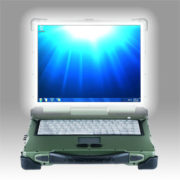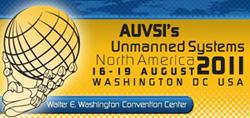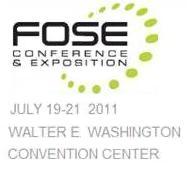 Recently the ARMY announced the cancellation of its current contract for the Joint Tactical Radio System (JTRS) Ground Mobile Radio System. Did its highly publicized plans for a battlefield smartphone have something to it?
Recently the ARMY announced the cancellation of its current contract for the Joint Tactical Radio System (JTRS) Ground Mobile Radio System. Did its highly publicized plans for a battlefield smartphone have something to it?
An uniformed person might think, “Sure, what does the ARMY need JTRS for, when they’re going for a smartphone?” Actually, the smartphone’s success depends on JTRS.
While security is usually described as the Number 1 concern for the battlefield phone, the lack of cellular service in potential combat zones has emerged as a major obstacle (Razorianfly). Almost all the proposed solutions for dealing with connectivity are partial. Some of the more innovative solutions include installing cellular equipment on blimps, UAVs, and aerostats. There’s even talk of a “cell tower in a suitcase.” Read more



 Recently, some clients asked AMREL to build an Operator Control Unit (OCU) for their Unmanned Ground Vehicle. No surprise there; we dominate that particular application. What was noteworthy was the specific form factor that they requested. They wanted it to be a wearable computer, worn on the wrist.
Recently, some clients asked AMREL to build an Operator Control Unit (OCU) for their Unmanned Ground Vehicle. No surprise there; we dominate that particular application. What was noteworthy was the specific form factor that they requested. They wanted it to be a wearable computer, worn on the wrist.
 Let’s assume that you already maxed out the brightness controls. Did you check the power management? If you’re running the laptop on batteries, it will often default to power savings mode, which will dim the screen. Also, crank up the contrast ratio to 5 to 1 or even higher. Does your computer think it’s dark out? Verify the dimming range is adjusted for the daytime, not the night. Adjust the viewing angle of the display screen. It sounds trivial, but the angle can make a big difference in how the screen is viewed.
Let’s assume that you already maxed out the brightness controls. Did you check the power management? If you’re running the laptop on batteries, it will often default to power savings mode, which will dim the screen. Also, crank up the contrast ratio to 5 to 1 or even higher. Does your computer think it’s dark out? Verify the dimming range is adjusted for the daytime, not the night. Adjust the viewing angle of the display screen. It sounds trivial, but the angle can make a big difference in how the screen is viewed.






 . Put it in a cargo pocket or hold it in your hand, the ROCKY DB6 handheld is the smallest rugged computer with full Windows/Linux in the world. To get a FREE life size cut-out, just click
. Put it in a cargo pocket or hold it in your hand, the ROCKY DB6 handheld is the smallest rugged computer with full Windows/Linux in the world. To get a FREE life size cut-out, just click  time; vibrate it all day for days at a time; subject it to altitude variations of 0 to 10,000 feet; operate it in temperatures reaching 130 degrees Fahrenheit; virtually soak the laptop in water for two days; expose it to humidity of 95 percent for prolonged periods. While this may seem like a specially designed test to force a laptop to fail, the truth is that this was an actual situation.”
time; vibrate it all day for days at a time; subject it to altitude variations of 0 to 10,000 feet; operate it in temperatures reaching 130 degrees Fahrenheit; virtually soak the laptop in water for two days; expose it to humidity of 95 percent for prolonged periods. While this may seem like a specially designed test to force a laptop to fail, the truth is that this was an actual situation.”